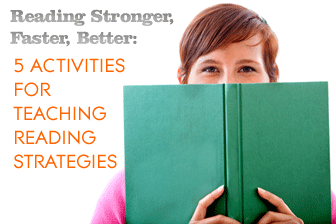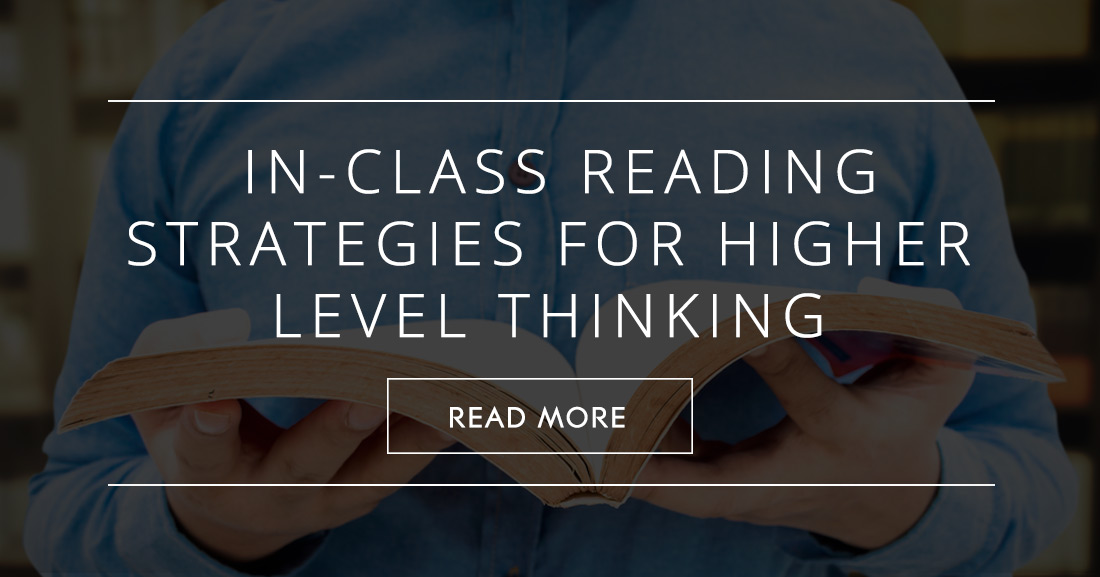Reading Stronger, Faster, Better: 5 Activities for Teaching Reading Strategies


Discussion, which is external and between individuals, is easily observed and therefore relatively easy to design activities for. One often-used method to externalize the reading process is to design a set of comprehension questions. There are different types of questions, often classified by the degree of thinking skills needed (from simple comprehension to those requiring more analysis). However, even well-designed questions can get monotonous.
Pre-reading is used to focus attention on the topic, to find out how much students already know about the topic (“background knowledge”) and build on that knowledge before plunging into a reading. For example, a topic that was raised in class last semester was in a story based on a grandfather clock, an old-style clock that functions as a piece of furniture. The students had never seen one, so the prereading involved pulling up a picture of a grandfather clock from the internet, discussing the traditional importance of clocks and watches in Western culture, which reveals attitudes about time, and so forth. Students were then able to address the reading with some background knowledge.
Skimming is the practice of reading for the main ideas only, which might be a second step after prereading. Students can read the introduction, conclusion, look at the subheadings and any visuals, the first sentences of paragraphs, etc., to garner the main ideas before moving into a more detailed reading of the text.
Scanning is the practice of looking for the specific details in the text: for example, specific statistics on how many people still wear watches rather than using their phones.
Instead of using a pre-formulated set of questions, students can develop their own set of questions after reading the title or scanning the text—what they would like to learn about in more detail—and then search for the answers in the text by skimming and scanning.
Marking a text is becoming a lost art—students don’t want to mark up expensive textbooks and diminish their value. In addition, many students these days read electronic versions of the textbook. Still there is a value in underlining, circling, starring, and taking marginal notes in critical parts of a text: it is like building a study guide directly into the text. To get more students to mark the texts alternatives can be employed such as using sticky notes to mark important parts of the text instead writing into it. In addition, most readers have functions of highlighting and book marking a text.
Many students enjoy reading out loud, and those who do enjoy it should be encouraged to do so. Hearing the text out loud from another student, or deciding oneself how to pitch one’s voice or where to put stress, aid in comprehension of the text and its subtler meanings.
After students have read the text one or two times, and have some clear ideas about the main ideas and details, they can then engage in more specific vocabulary practice. Most topics and readings are centered around words with the same or similar meaning, that relate to each other and then in addition relate back to the topic. For example, a reading on the topic of longevity in the United States will have academic words related to health and aging—just the word “longevity” is itself an academic, not conversational, word. Words related to mental and physical health will also arise: “attitude,” “obesity,” etc. These words can be examined for their relationship to other words: e.g., “longevity,” for example, or “long” life. The “—ity” ending is a noun ending, turning the adjective “long” into a noun. Students can be asked to brainstorm a list of similar ending words that they can think of and then the words can be examined in class, written on the board, and discussed.
Students can also study the grammatical patterns of an academic text: e.g., find use of the passive voice in the text, or select confusing sentences for analysis and diagramming. For both the intensive grammar study as well as the vocabulary, students can discuss ways to reword the text with different choices of words or sentence structure.
Summarizing is an important reading strategy—if students are able to retell or rewrite a text, using different words and grammatical structures and maintain the meaning, they demonstrate understanding of the text.
After the text itself has been thoroughly explored, students can go beyond it and extend meaning, connecting the topic of the text to their own lives. One way to do this is through discussion, more or less structured, as appropriate. The instructor might simply throw out the question of what the students thought of the text, which might lead to a long discussion, or more prompting might be needed in specific questions surrounding the text.
If the text was on a controversial issue, such as the right to bear arms or the limits of free speech, students might take different sides on the issue and engage in an impromptu debate.
Journaling or informal writing on the topic is also a way to extend engagement with the text. These written pieces can also be more or less structured, with either students just writing their responses and thoughts on the topic or with more specific direction, such as using a certain number of words from the text, or addressing specific questions, and so forth.
A final way students might engage with a text, especially if the text was a narrative form such as a short story, is for students to take specific roles in the text and act out a scene or scenes from the story.
There are clearly many creative ways to engage with a text beyond simply handing out question sheets: activities to engage in before, during, and after reading that will not only improve student reading, but also their enjoyment and engagement with the reading process.